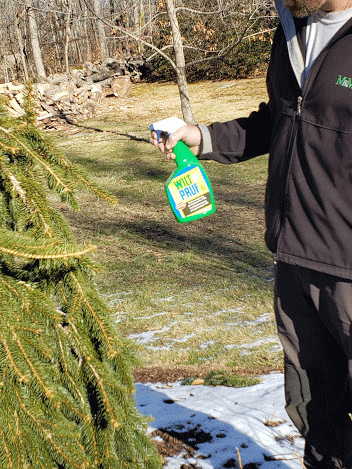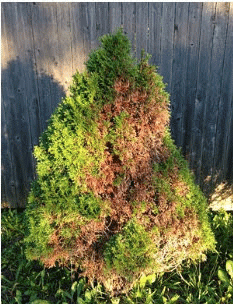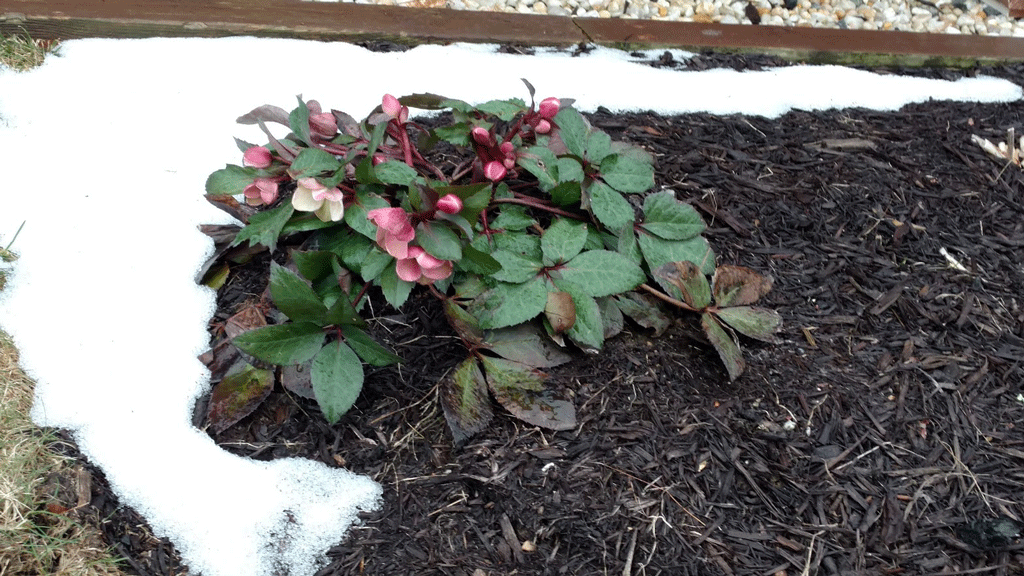As humans, we can bundle up and put on an extra layer or two in order to ward off the biting winter winds that instantly rob our skin of any moisture. Plants don’t have such luxury, and the wind affects them too. Ever notice how you can see your breath in the winter? That’s the moisture coming from your lungs as you respire, or breathe.
Believe it or not, evergreen plants still respire in the winter, and just like people, they lose moisture when they respire. As they lose moisture from their leaves, their roots draw moisture in from the surrounding soil and replenish the moisture to their system. They can’t do that when the ground is frozen, so they end up losing moisture which can be detrimental. You can help them. Here are a few things you can do to ensure your plants remain healthy:
Water Your Garden
Make sure your garden is well watered before winter is in full swing and the ground is frozen solid. It’s not often that we have a dry fall, but if we do, making sure your garden is well watered – even if the plants are dormant – will go far to help them survive the winter. This fall was particularly wet, so thanks to Mother Nature, that’s covered.
Spray with an Anti-Dessicant
The other thing you can do is spray your broadleaf evergreens such as your rhododendrons and azaleas with something that’s called an anti-dessicant. Anti-dessicants still allow your shrubs to photosynthesize and respire, but it protects them from moisture loss. Anti-dessicants are a protective coating that is sprayed on your plants foliage to reduce the amount of moisture that escapes. A good analogy is that it’s like Chapstick for your plants. Chapstick works to coat your lips so they don’t lose moisture. Chapped lips are merely a sign of moisture loss, or mild dehydration. So next time your lips are chapped, reach for a glass of water before putting on your lip balm.

Wilt Pruf is an all natural brand that we use. While some anti-dessicants are made from chemicals, Wilt Pruf is made from pine oil. I should mention that any product I refer to is a product I myself use in my own garden or in my clients’ gardens. I get no kickback from my recommendations and everything is personal preference. What I like to use, you may not like. So always feel free to try different products in your gardens.
You want to spray your plants when it’s cold and when it will stay cold. Typically around late December/early January. Depending on how harsh the winter is, you may want to consider spraying again in mid to late February. To me, that’s when winter here in Connecticut is at it’s harshest.
Plants to Spray
Broadleaf evergreens such as boxwoods (which in my experience seem to be the most susceptible broad leaf shrub), rhododendrons, azaleas, hollies and euonymus. You can spray your conifers as well. Arborvitae, cedar, cypress, false cypress, juniper and pine.
A word of caution: you should never spray blue conifers such as blue spruce because they already have a natural coating and the anti-dessicant can interfere with that. Hydrangeas and rose canes (especially young roses) can benefit from an anti-dessicant as well.

Follow all the package instructions and pick a nice day. You want it to be well above freezing, so one of those days when the sun is out and it’s in the upper 30’s might be a good time to get out there. Visit your garden so your plants know you’re thinking about them, and give them a little anti-dessicant spritz while you soak up some vitamin D for yourself.
Spray thoroughly. Don’t forget about the underside of the leaf! Plants lose moisture from all their leaf surfaces, so if you miss the underneath, half of your plant is still exposed. That’s like us going outside on a windy day in shorts and a tank top! Brrrrr!
For more information about M&M Garden Designs, visit www.mmgardendesigns.com






